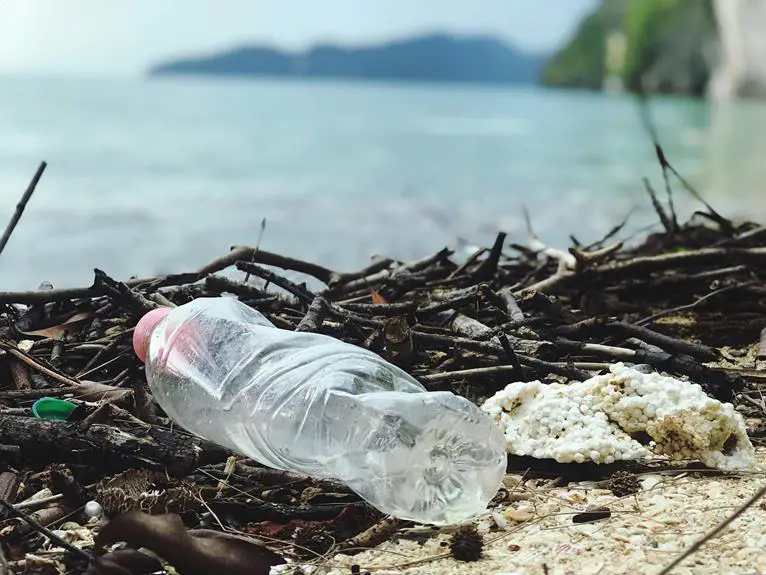When you think about the cozy comfort of microfleece, it's easy to overlook the hidden costs tied to its production. You might not realize that the process consumes significant resources and has a hefty carbon footprint, not to mention the detrimental effects on our water systems and marine life due to microplastics. This leads to a pressing question: is the convenience of microfleece worth the environmental toll it takes? Exploring the complexities behind its production could shed light on the bigger picture of sustainability in the fashion industry.
Table of Contents
Production Process and Resource Use
When you look at the production process of microfleece, you'll notice it requires significant amounts of petroleum-based resources and energy. Microfleece is primarily made from polyester, which is derived from crude oil. This dependence on non-renewable resources raises concerns about sustainability.
In the initial phases, raw materials are sourced, which often involves extracting petrochemicals from the earth. The energy-intensive processes involved in converting these raw materials into microfleece often lead to high greenhouse gas emissions. Factories operate with massive machinery, consuming electricity and other forms of energy, contributing to your carbon footprint.
The manufacturing process includes spinning and weaving, which demand additional energy at each step. This not only results in resource consumption but also raises concerns about the efficiency of production methods. With each stage, there's potential for waste generation and negative environmental impacts.
Being aware of these factors helps you appreciate the complexities involved in microfleece production. Understanding the resource inputs required can inform your choices when selecting clothing and textiles in the future, guiding you towards more sustainable options.
Water Consumption and Pollution
Microfleece production often consumes large quantities of water, contributing to significant pollution in local ecosystems. Manufacturers often draw from local rivers and lakes, putting stress on water resources that communities depend on.
The dyeing and finishing processes require even more water, leading to greater depletion of these vital sources.
As you consider the impact, think about how wastewater from production facilities contains harmful chemicals, like dyes and solvents.
When this contaminated water isn't properly treated before disposal, it can seep into nearby waterways, damaging aquatic life and disrupting ecosystems.
You may notice changes in the quality of water in your area, including decreased clarity and increased toxicity, which can have a ripple effect on local flora and fauna.
Carbon Footprint of Microfleece
The carbon footprint of microfleece production contributes significantly to climate change through the emissions generated during manufacturing and transportation processes. When you purchase a microfleece garment, you're indirectly supporting an industry that relies heavily on fossil fuels.
The production starts with extracting raw materials, primarily petroleum, which involves energy-intensive processes. This extraction releases greenhouse gases, setting the stage for a higher carbon footprint.
Once the raw materials are in hand, manufacturers use vast amounts of energy to transform them into microfleece. This stage also emits significant carbon dioxide and other harmful gases.
After production, transportation plays a vital role in further increasing emissions. Most microfleece products are shipped globally, involving multiple modes of transport that burn fossil fuels and release even more carbon.
Additionally, consider the lifecycle of your microfleece garment. Frequent washing and drying contribute to its overall footprint as they lead to energy consumption and emissions from electricity production.
Microplastics and Ocean Impact
While understanding the carbon footprint of microfleece is important, the issue of microplastics released during washing poses a significant threat to ocean ecosystems. Every time you wash your microfleece garments, tiny plastic fibers break loose and flow into wastewater systems. These microplastics are so small that they often evade filtration at treatment plants, eventually making their way into rivers and oceans.
Once in the ocean, these microplastics can be ingested by marine life, including fish, which can lead to serious health issues. When you eat seafood, you might unknowingly introduce these harmful particles into your diet. This not only impacts your health but also disrupts food chains and marine biodiversity.
Moreover, microplastics break down into even smaller particles, affecting organisms at every level of the marine food web. Ingested particles can accumulate toxins that persist in the environment, leading to bioaccumulation and biomagnification.
It's crucial to recognize the impact of microfleece on ocean health. By understanding this connection, you can make more informed choices about your clothing and advocate for cleaner, safer oceans.
Alternatives and Sustainable Practices
Exploring alternatives like organic cotton or recycled materials can significantly reduce your environmental footprint and promote sustainable practices in your wardrobe. By choosing these options, you're not just making a fashion statement; you're also making a positive impact on the planet.
Here's a comparison of some alternatives:
| Material | Benefits | Drawbacks |
|---|---|---|
| Organic Cotton | Biodegradable, no harmful pesticides | May require more water |
| Recycled Polyester | Uses less energy in production | Still can shed microplastics |
| Hemp | Grows fast, low water usage | Limited availability |
| Tencel | Made from sustainable wood pulp | Can be more expensive |
| Bamboo | Naturally antibacterial | Environmental impact varies |
You'll find that switching to these materials not only helps minimize harmful effects but often encourages companies to adopt greener practices as well. Remember, every little change counts—each time you choose sustainable fabrics, you're contributing to a healthier planet. Make conscious choices, and your wardrobe can reflect both your style and your values.
Frequently Asked Questions
How Long Does Microfleece Last Before Needing Replacement?
Microfleece can last several years with proper care, often around five to seven years. However, wear and tear, along with how frequently you use it, can affect its longevity, so regular checks are advisable.
What Are the Health Risks Associated With Microfleece?
Microfleece can pose health risks like skin irritation or allergies for some people. If you're sensitive, you'll want to test it first, as prolonged exposure might lead to discomfort or rashes in certain individuals.
Is Microfleece Recyclable or Biodegradable?
Microfleece isn't biodegradable, as it's made from synthetic materials. However, you can recycle some microfleece products through specialized programs. Always check your local recycling options to ensure proper disposal and minimize environmental impact.
Can Microfleece Be Made From Recycled Materials?
Yes, microfleece can be made from recycled materials, like recycled plastic bottles. By using these materials, you help reduce waste and support a more sustainable clothing industry, making your wardrobe a bit more environmentally friendly.
How Does Microfleece Compare to Natural Fibers in Sustainability?
When comparing microfleece to natural fibers in sustainability, you'll find that microfleece often uses less water and energy. However, natural fibers typically biodegrade more easily, making them a better long-term environmental choice overall.
- How Does Ring Spun Cotton Affect Garment Fit and Shape Retention? - August 13, 2024
- What Are the Challenges in Producing Ring Spun Cotton? - August 13, 2024
- Is Ring Spun Cotton Suitable for Plus-Size Clothing? - August 13, 2024







